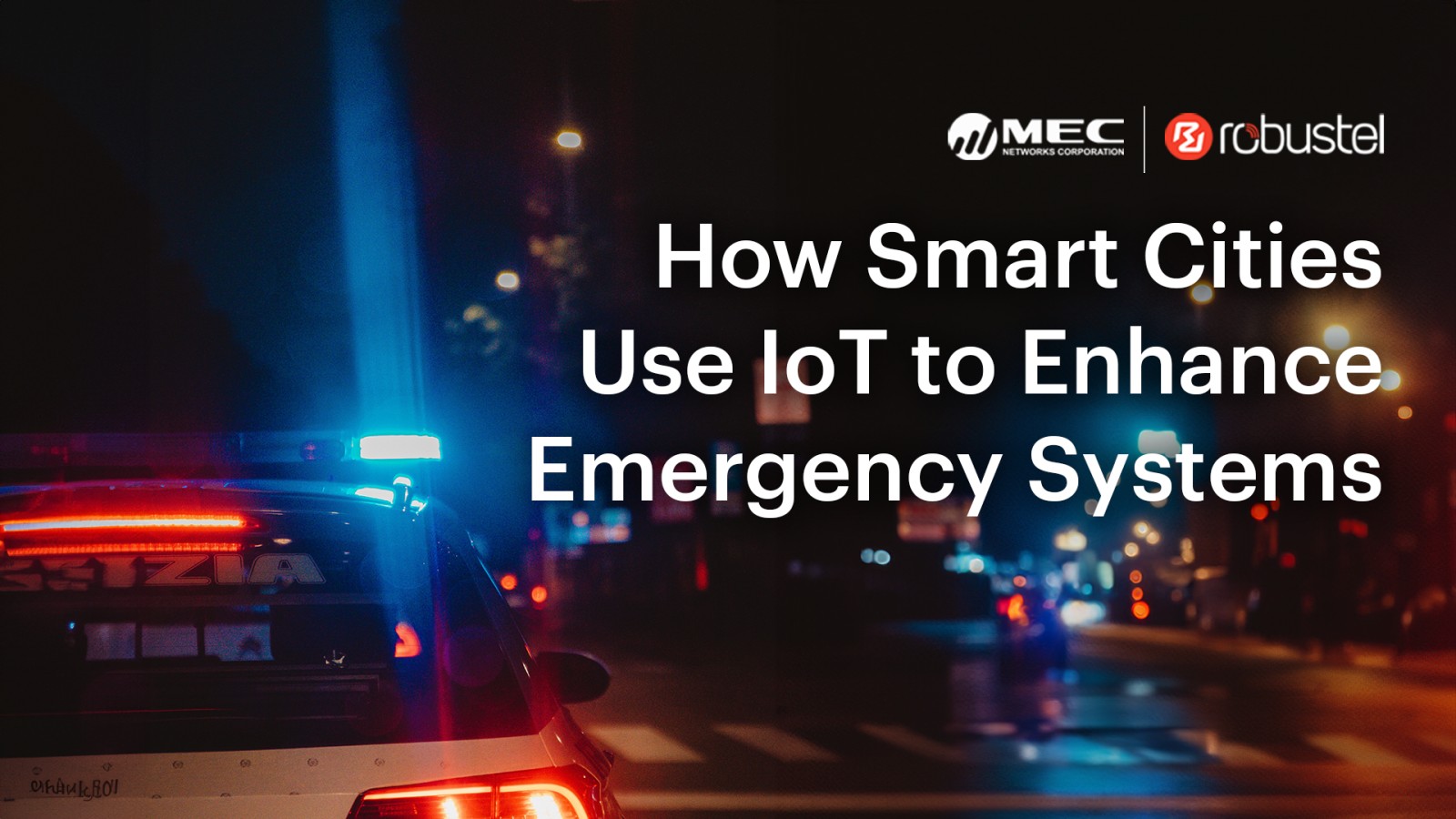In the face of growing urban challenges, cities worldwide are turning to innovative solutions to enhance operational efficiencies and improve the well-being of their residents. As a premier ICT distributor in the Philippines and proud partner of Robustel, we delve into the transformative impact of the Internet of Things (IoT) on emergency management in smart cities.
The surge in population has put tremendous pressure on city infrastructures, resulting in challenges like increased commute times and traffic congestion. Smart cities are the answer, utilizing IoT to not only address these issues but also elevate public safety through advanced emergency alert systems. While IoT can’t prevent emergencies, it plays a pivotal role in early detection, rapid response, and effective recovery.
The Technology Behind Smart Cities' Safety
At the heart of the smart city ecosystem lies a seamlessly connected network of devices and technologies. This dynamic network operates in real-time, enabling cities to make informed decisions that prioritize safety and well-being. Here’s a glimpse into the technologies shaping the future of smart city emergency management:
Streetlights
Surveillance capabilities through sensors, cameras, and audio recorders provide comprehensive coverage. Additionally, smart lighting systems can autonomously adjust brightness, enhancing visibility as needed.
Traffic Lights
Smart traffic lights analyze traffic patterns and congestion, dynamically adjusting timings to optimize traffic flow. In emergencies, these lights can swiftly clear a path for first responders, ensuring a rapid and efficient response.
Emergency Vehicles
Gathering real-time data from the field, emergency vehicles offer a live view of the situation to aid other responders. This data also serves as valuable insights for training purposes, enhancing overall emergency preparedness.
Smart Buildings
Smart building networks employ automation to monitor access and internal conditions, contributing to a safer urban environment.
Sensors
Deploying sensors at scale, smart cities constantly monitor air quality, fire risks, and weather conditions. This extensive sensor network serves as a proactive measure against potential threats.
How Smart Cities Respond to an Emergency
Smart cities are using these technologies in innovative ways to create smart, connected urban hubs that help keep their citizens safe. Let’s look at some of the ways these technologies are being used in case of an emergency.
Risk Management
Smart cities employ security systems equipped with sensors and CCTV to swiftly detect potential threats or hazards. This real-time response is crucial in bustling urban centers, where countless individuals navigate the city daily. By recording subtle changes in buildings, the environment, or public spaces, smart city technology transmits data to a centralized dashboard. Authorities receive instant alerts, enabling them to prepare proactive responses and implement risk management strategies.
Smarter Emergency Response
In emergencies ranging from rapid-spreading fires to escalating crimes, response time is pivotal. Smart city infrastructure, interwoven and interconnected, enhances efficiency throughout the emergency response process. Sensors and video surveillance optimize traffic routes for emergency vehicles, adjusting traffic lights and identifying less congested paths. Smart city sensors continue their invaluable role on-site, providing real-time information to first responders and offering a comprehensive view of the unfolding emergency. Autonomous drones and vehicles further aid in reaching challenging terrains swiftly, contributing to quicker and more effective interventions.
Smart Healthcare
IoT in smart cities extends its impact beyond the emergency zone to healthcare facilities, fostering improved remote treatments, faster diagnostics, and global collaboration among specialists. In public health, IoT helps respond to major disease outbreaks. For instance, IoT devices monitor environmental factors to trace the source of water-borne viruses. Drones equipped with IoT technologies identify risks such as standing pools of water or infected insects, contributing to proactive disease prevention.
Public Safety
Preventing emergencies before they escalate is a key focus for smart cities, and IoT plays a pivotal role in managing crowds, environmental conditions, and road safety. Smart digital signage informs drivers about risky road conditions, while sensors and video surveillance monitor crowd levels, providing real-time alerts as early warnings. This proactive approach enables emergency response teams to act swiftly, averting potential threats before they spread.
Empower Your IoT Connectivity
A reliable connection is at the core of ensuring urban safety. Embracing IoT devices allows city managers to seamlessly monitor real-time data, enhancing responsiveness, regardless of where an event unfolds. Robustel’s resilient outdoor routers offer an ideal solution deployed in diverse environments, from challenging terrains to intricate public transport networks.
Elevate your IoT connectivity with our solutions. Contact us today to bring safety and efficiency to your networks.





